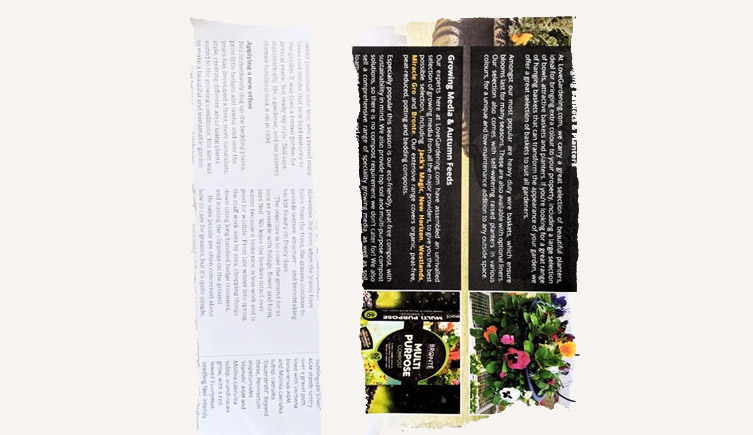Species variation game: peppered moth lucky landing
In this activity, your class will use images of historic peppered moth specimens from the Museum's collection to understand variation in a population.
They will then play the lucky landing game to explore how changes in the environment affects the survival of peppered moth variations.
- Key Stage: KS2 Year 6 (ages 10-11)
- Time required: 20 minutes
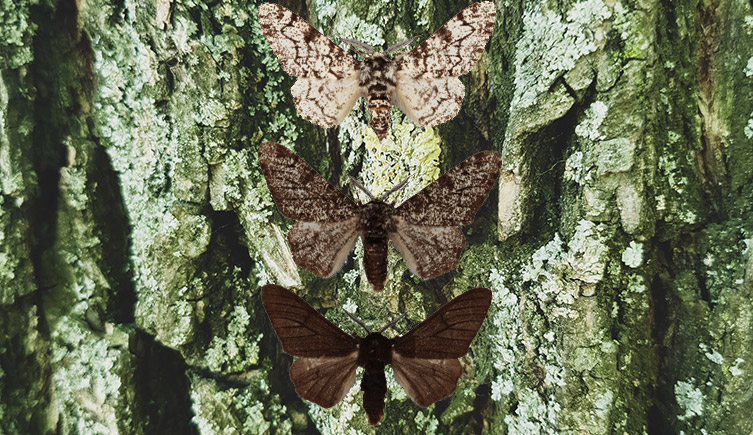
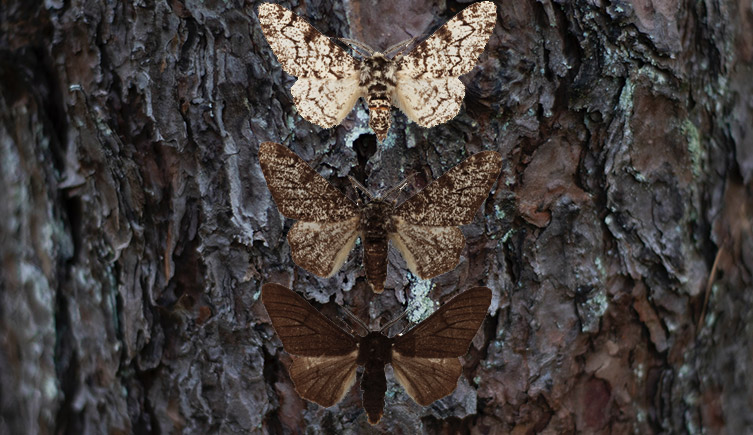
Three different varient colours of the peppered moth contrasted against light and dark bark. (Dark bark image: Mathias Lövström on Unsplash, light bark image: Elena Zalivochkina on Unsplash)
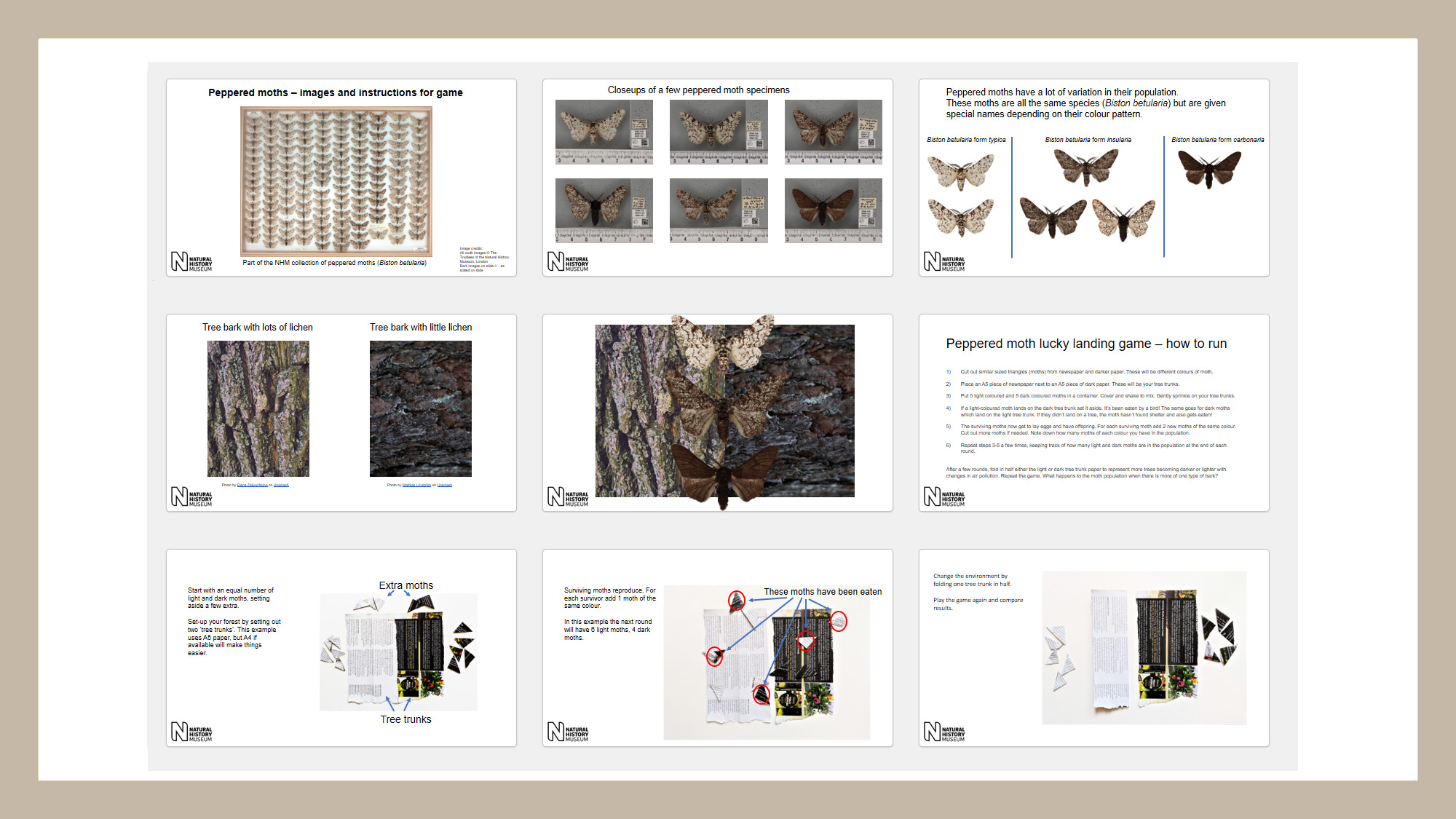
About this resource
- Resource type: game, image bank
- Theme: Evolution and inheritance (National Curriculum Year 6)
Learning outcomes
- Learners will understand that variations can occur within a species.
- Learners will understand that changes in the environment can affect a species’ ability to survive and reproduce.
Running the activity
1. Variation in one species
Use the PowerPoint images of peppered moth specimens to illustrate the range of variation (the differences between individuals) possible within a single species. Are all the different colours equally likely to survive in a habitat?
2. Predict
Show your class the different types of tree bark. Get your class to predict which colour of peppered moth might be better camouflaged. Test predictions by moving the moth pictures onto the different bark images.
How might changes in the colour of tree bark in a whole forest affect a population of peppered moths?
3. Play the game (See PowerPoint slides for full instructions)
Game instructions
If the bark on the trees stayed mostly dark, what might happen to the population of moths if the game is played for 10 rounds? 100? Could the population of moths become so different that they evolve to become a new species?
See extension activities below for further ways to explore this topic.
Materials required
For each group:
- 2 x A5 black paper
- 2 x A5 piece of newspaper
- Scissors to cut out moth triangles
Plus some spare paper in case of a moth population boom.
Background science
Evolution by natural selection is the process of change in the characteristics of a population in response to the environment. Observations of peppered moths (Biston betularia) in the UK are an example of scientists observing this change over a short period.
The peppered moth has a lot of variation. They can be white and speckled (B. betularia f. typica) to almost entirely black (B. betularia f. carbonaria). In the 19th century, collectors in Britain noticed that the darker form was becoming more common.
At that time people were using huge amounts of coal to fuel the industrial revolution. Air pollution from all this burning coal produced acid rains which killed off many types of lichen. The death of these light-coloured lichens and soot from the coal, led to darker tree trunks and branches in forests around big industrial cities such as Birmingham and Manchester.
Observations and experiments showed that darker carbonaria moths were better camouflaged against the darkened trees, and less likely to be eaten by birds. Since the Clean Air Act came into force in the UK in 1956, lichens have regrown and the lighter coloured moths have become more common again.
Environmental pressures lead to evolution by causing the characteristics of a population to become very different from others. Given enough time, the differences can make it unlikely or impossible for one population to successfully breed with others. In these cases they may be described as new species or sub-species.
Suggested extension activities
Game variations
Adding textures
Manymoths and caterpillars have tufts of hair which create textures that mimic bark or lichen. Students could use crepe paper or other materials to create textured moths and tree bark.
Musical chairs
You could play out a simpler version of the lucky landing game through musical chairs using night forest sounds as the music. The chairs represent trees, with the children carrying a moth each. Daylight comes, the forest sounds stop - they need to sit on the nearest chair. If their moth colour doesn’t match their chair colour then they will be eaten by a bird.
Extensions
Graphing results
Graph the results from each round in the game. Is there a pattern when more of the forest has light or dark bark?
Model moths
Make model moths with clay or dough. Use toothpicks or old toothbrushes to give them texture and add colour with paint. Bring the moths outside and see what natural and human made surfaces they can camouflage on. Discuss how changes in the area might effect the survival of the moths.
Moths in unnatural habitats
Think about the habitat of your classroom or home. Research UK moths and see if there are any which might be able to camouflage themselves indoors as well as outdoors. (You could think about clothes moths, for example) Is camouflage sufficient for a moth to survive and reproduce? (Consider the moth’s basic needs of food, water shelter etc.) What other adaptations would a wild moth need to evolve into an indoor species?
Curriculum links
KS2 National Curriculum (Upper KS2)
Working scientifically
- Taking repeat readings recording data using tables, scatter graphs, bar and line graphs.
- Using test results to make predictions to set up further comparative and fair tests.
- Reporting and presenting findings from enquiries, including conclusions, causal relationships.
- Identifying scientific evidence that has been used to support or refute ideas or arguments.
Evolution and inheritance (Year 6)
- Recognise that living things produce offspring of the same kind, but normally offspring vary and are not identical to their parents.
- Identify how animals and plants are adapted to suit their environment in different ways and that adaptation may lead to evolution.
- Recognize that characteristics are passed from parents to their offspring.
- Appreciate that variation in offspring over time can make animals more or less able to survive in particular environments.
- Analyse the advantages and disadvantages of specific adaptations.
Related resources
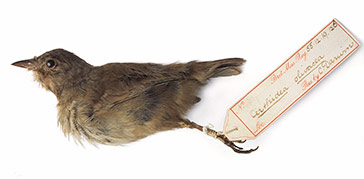
Evolution: spot the adaptations in Darwin's finches
Compare the beaks of six of Darwin's Finches from the Galápagos Islands - a useful starter video for a lesson on adaptation and evolution.
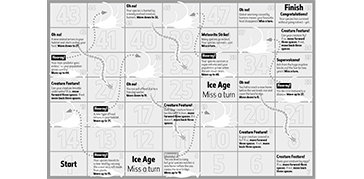
A game of Snakes and Antlers
By playing Snakes and Antlers children will understand the impact environmental factors have on evolution, and the impact environmental and human factors have on the survival of species today.PDF (4.9MB)





